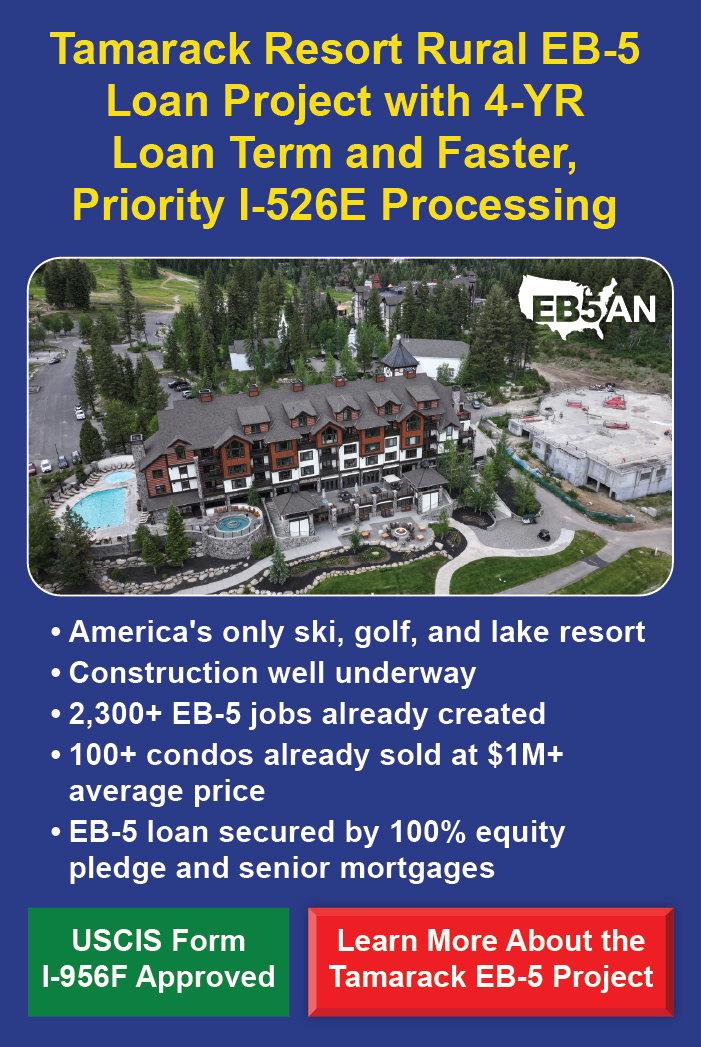
Many foreign nationals are discouraged from choosing the EB-5 visa program because they believe it is complicated. However, they overlook the flexible nature of the EB-5 program. Compared to other visa options, it does not focus on the specific qualifications or exceptional skills of the applicants.
EB-5 is a straightforward program that focuses on two main criteria: capital investment and job creation. Applicants must invest at least $800,000 in a targeted employment area (TEA) project, or $1,050,000 in projects in other regions. This investment must create at least 10 full-time positions for qualifying U.S. workers before applicants will be eligible for an EB-5 Green Card.
Interested candidates can apply for the EB-5 visa either from outside the U.S. through consular processing or inside the U.S. through adjustment of status. In either case, certain foreign nationals tend to benefit from the EB-5 visa route more commonly than others. In this article, we look at those specific groups and explore how they can get their Green Cards through an EB-5 investment.
Foreign Nationals Who Are Ideal Candidates for the EB-5 Program
- Nationals of Countries With High Demand for Employment-Based Visas
- International Students Who Want to Stay in the U.S. Long-Term
- E-2 Visa Holders
- Individuals With No Sponsorship Options
Why Choose the EB-5 Immigrant Investor Program?
- Direct Path to Obtaining a Green Card
- Family Inclusion
- Potential Return on Investment
- Avoidance of Professional and Academic Barriers
Get Started on Your EB-5 Journey With EB5AN
Foreign Nationals Who Are Ideal Candidates for the EB-5 Program

The flexible nature of the EB-5 program makes it possible for aspiring applicants to structure their investments in ways that fit their financial and immigration goals.
Furthermore, the EB-5 Immigrant Investor Program is not based on familial relations or skills. Most foreign nationals can apply for and obtain their Green Card through this pathway, as long as they fulfill all requirements.
Below, we will look into some groups of foreign nationals for whom the EB-5 program can be a great option, regardless of their educational or professional backgrounds.
Nationals of Countries With High Demand for Employment-Based Visas
Due to a high demand for Green Cards, nationals of some countries face additional difficulties throughout their immigration journeys. Chinese and Indian nationals typically experience prolonged backlogs in employment-based visas. This is often due to the large number of highly skilled professionals that apply for visas, vastly exceeding the countries’ quotas. As a result, many visa applicants—particularly in EB-1, EB-2 and EB-3 categories—are frustrated by the waiting times and are often forced to give up on their dreams of obtaining a Green Card.
The introduction of the reserved visa categories by the EB-5 Reform and Integrity Act of 2022 (RIA) makes the EB-5 visa pathway an excellent alternative for foreign nationals from backlogged countries. By setting aside visas for rural and high-unemployment TEAs, the program ensures a more equitable distribution of visas. This reduces wait times and even introduces a priority processing opportunity in the case of rural investments. The set-aside EB-5 categories have no backlogs at the time of writing.
International Students Who Want to Stay in the U.S. Long-Term

The F-1 visa offers a pathway for international students to study in the U.S. However, this visa is granted for the duration of the student’s academic program (plus additional extensions in some cases.) However, F-1 is not an immigrant visa and students who wish to remain in the U.S. after graduation need to change their status to another visa.
The EB-5 visa offers F-1 student visa holders an opportunity to remain in the U.S. post-graduation without requiring a job offer from an employer. It is one of the fastest routes for international students to achieve permanent residency in the United States.
On December 20, 2023, USCIS revised its regulations for student visas. These visas require students to plan to leave the U.S. after finishing their studies. The new rules clarify that F and M student visa holders can apply for an immigrant visa without breaking their visa terms, as long as they have a home in another country. With this change and the concurrent filing option provided by RIA, F-1 students can apply for EB-5 visas while still studying. They can also apply for work authorization, a travel permit, and adjustment of status at the same time, enjoying Green Card benefits while their applications are processed.
E-2 Visa Holders
The E-2 visa permits investors who have made substantial investments to enter the U.S. to manage their businesses, if their country of origin has a treaty with the U.S. This visa option is suitable for foreign nationals who are only interested in residing in the U.S. temporarily. It does not directly lead to permanent residence since the E-2 visa is a non-immigrant visa. Instead, eligible investors extend their stay by renewing their visas.
Investors seeking better stability should change to an immigrant visa category, such as the EB-5 visa for immigrant investors.
Transitioning from an E-2 visa to an EB-5 visa is feasible because the funds invested in the E-2 enterprise can be counted toward the $800,000 minimum investment needed for the EB-5 visa. Additionally, if the business already employs full-time U.S. workers, these positions can fulfill the EB-5 visa’s job creation requirements.
In most cases, the E-2 investor already resides in the U.S., so they may file their Form I-485 to adjust their status concurrently with their EB-5 application.
Individuals With No Sponsorship Options

Many U.S. visa pathways require sponsorship from either family members or employers. The EB-5 visa is one of the few options available to foreign nationals who have no sponsorship opportunities.
The H-1B visa is a common sponsored visa type, and it requires applicants to first be selected in a visa lottery and then maintain employment to stay in the U.S. With the recent tech layoffs affecting many H-1B visa holders, the EB-5 visa can offer a fast-track to a U.S. Green Card and eventual citizenship, all without work or travel limitations or the need for sponsorship.
For a real-life example of how the right EB-5 investment can impact your Green Card process, watch how Milan from India invested with EB5AN in April 2023 and had his I-526E approved.
Why Choose the EB-5 Immigrant Investor Program?

The following section highlights the advantages of the EB-5 program over some other types of popular U.S. visas.
Direct Path to Obtaining a Green Card
The EB-5 visa provides a direct path to obtaining a Green Card, unlike many employment-based categories. It does not require visa extensions or renewals, and once an investor removes conditions on their Green Card, they face no restrictions.
The fact that the visa requires no sponsorship is also beneficial for nationals of countries with high demand, where finding an employer sponsor tends to be challenging.
Family Inclusion
The EB-5 visa allows the primary applicant to include their spouse and unmarried children under 21 in the application. This family inclusivity is particularly beneficial for applicants who want to provide their children with better access to high-quality education and healthcare. Spouses who hold EB-5 Green Cards can also live, work, and study in the U.S. without restrictions, unlike some other popular visa categories like E-2 and H-1B.
Potential Return on Investment
While the primary goal for many EB-5 investors is to secure a U.S. Green Card, the investment itself holds the potential for a return. Depending on the terms of the project’s PPM and the success of the investment, EB-5 investors can receive their entire capital back in a relatively short time, potentially with profits.
Avoidance of Professional and Academic Barriers
The EB-5 visa does not require extraordinary abilities, talent, specific professional qualifications, or higher education degrees that are needed for other visa types like the EB-1 or EB-2. This makes it accessible to a broader range of applicants, including those who may not meet the stringent requirements of other employment-based visas.
Furthermore, unlike the E-2 visa, EB-5 eligibility does not depend on the applicant’s nationality.
Get Started on Your EB-5 Journey With EB5AN

While EB-5 visas are accessible to applicants who have fulfilled the given criteria, it is common for investors to overlook certain requirements, miss dates, or fail to provide correct documents. Such mistakes can lead to serious setbacks and ultimately harm the application. This is why investors should consult experienced EB-5 professionals to provide them with guidance and support throughout the EB-5 process.
If you are considering the EB-5 pathway to obtaining a Green Card, schedule a free consultation, and our expert team will be happy to help you get started.











